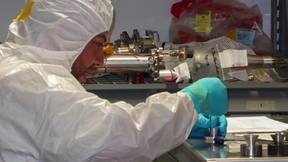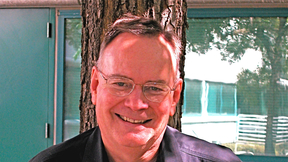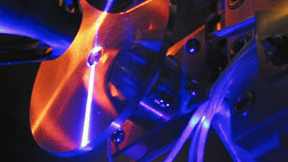- Additive manufacturing
- Advanced membranes
- American Physical Society
- ASC
- Astrophysics
- Atmospheric, Earth, and Energy
- Batteries
- Battery materials
- Bay Area Science Festival
- Biofuels sfa
- Biological Accelerator Mass Spectrometry
- Biosciences and Biotechnology
- Biosecurity
- Biosecurity & Bioscience
- Biosecurity and Bioforensics Group
- Biosecurity sfa
- Capacitive deionization
- Carbon nanotubes
- Carbonate materials
- Center for Accelerator Mass Spectrometry
- Center for Applied Scientific Computing
- Center for High Energy Density Science
- Charity
- Community
- Community gift program
- Computing & Simulation
- Counterterrorism
- COVID-19
- Ct vaccine center
- DARPA
- Data Science
- Data Science Institute
- Defense and Deterrence
- Discovery Center
- DOE
- Earth system science
- Education
- Emergency
- Energetic Materials Center
- Energy flow charts
- EOS and Materials Theory Group
- Expanding Your Horizons
- Forensic Science Center
- Fun with science
- Fundamental Science
- Fusion
- Gemini Planet Imager
- Glenn T. Seaborg Institute
- HEAF
- High Energy Density Science
- HOME Campaign
- HPC
- HPC Innovation Center
- HPC4Mfg
- Hydrogen production
- Hydrogen storage
- IEEE
- Inclusion
- Inertial confinement fusion
- Intelligence
- Internships
- Jupiter Laser Facility
- Laboratory for Energy Applications for the Future
- Laser Materials
- Lasers
- Lasers and Optical Science Technology
- Livermore Center for Quantum Science
- Livermore Computing
- Livermore Valley Open Campus
- Livermorium
- LLMDA
- LLNS
- Machine learning
- Materials Science
- Microbiology and Immunology Group
- Nanocrystal solar cells
- Nanoscience
- NanoSIMS
- National Ignition Facility
- Neural devices
- Neutrinos
- Newsline
- nEXO
- NNSA
- Nonproliferation
- npneq
- Nuclear
- Nuclear and Chemical Sciences
- Nuclear and Particle Physics Group
- Nuclear Chemical and Isotopic Science
- Nuclear forensics
- NuSTAR
- Office of Science
- Outreach
- Oxidation and degradation
- pcmdi
- People
- Periodic table
- Physics
- Planetary Defense
- Postdocs
- Procurement
- Quantum Simulations Group
- Rare-earth elements
- Rubin Observatory
- Science
- Science and Technology Review
- Science on Saturday
- Sequestration
- Soil microbiome sfa
- Solar
- Solar system
- Solid-state batteries
- Space
- Space Science Institute
- STEM
- Stockpile stewardship
- Students
- Summer Student Spotlight
- Supercapacitors
- Supercomputer
- Supercomputing
- Surface analysis
- Sustainability
- Technology Transfer
- Tours
- Transport system
- Traumatic brain injury
- User Facility
- Veterans
- Viruses
- Water
- Water research
- Weapons
- Women in STEM
- Women's Hall of Fame
- WWW Research Landing Page
- X-ray
Back
Nuclear forensics
Lab analysis reveals forensic signatures of nuclear material during international smuggling exercise
Lawrence Livermore National Laboratory (LLNL) scientists received mock evidence, consisting of two uranium oxide (UO2) fuel pellets, as part of an international nuclear forensic exercise in support of a simulated nuclear smuggling investigation. The exercise was part of the CMX-5 Collaborative Materials Exercise organized by the Nuclear Forensics International Technical…
Providing data for nuclear detectives
Fans of the popular TV series "CSI" know that the forensics experts who investigate crime scenes are looking for answers to three key questions: "Who did it; how did they do it; and can we stop them from doing it again?"The field of nuclear forensics, an important element of LLNL’s national security mission, has similar goals and uses similar techniques — but with even…
White captures second award for nuclear forensics work
For the second time, Lab physicist Roger White, a designer in B-Division from the Weapons and Complex Integration (WCI) Directorate, has received an award from the Defense Threat Reduction Agency (DTRA) for his work in post-detonation nuclear forensics.White was named the "top contributor of the quarter" for the third quarter of the fiscal year 2013 (April-June, 2013) for…
From the stars to nuclear forensics
Using an instrument originally developed to probe the minute amounts of stellar dust found in meteorites, Kim Knight has developed a technique to analyze raw materials to determine the fallout from a nuclear explosion. Called Resonance Ionization Mass Spectrometry or RIMS, Knight and LLNL colleague Ian Hutcheon, along with collaborators at Argonne National Laboratory and…









